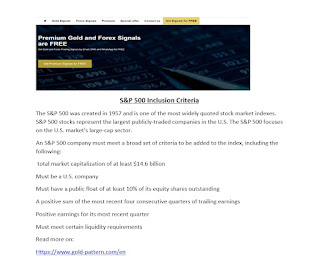What Is a Retracement?
What
Is a Retracement?
A
retracement is a technical term used to identify a minor pullback or change in
the direction of a financial instrument, such as a stock or index. Retracements
are temporary in nature and do not indicate a shift in the larger trend.
KEY
TAKEAWAYS
A
retracement is a minor pullback or change in the direction of a financial
instrument, such as a stock or index.
The
term, used by technical analysts to analyze the price of securities, refers to
a short-term change in a stock's price relative to an overarching trend.
Once
a retracement is over, there should be a continuation of the previous trend.
Retracements
are not the same as reversals—with the latter, the price of the security must
breach support or resistance levels.
Understanding
a Retracement
A
retracement refers to the temporary reversal of an overarching trend in a
stock's price. Distinct from a reversal, retracements are short-term periods of
movement against a trend, followed by a return to the previous trend.
The
chart below illustrates the share price of General Electric Co. It is showing
that the stock is in a downtrend. However, there are points on the chart that
indicate that the price is rising, which would be considered a retracement.
A
retracement by itself does not say much. However, when combined with other
technical indicators it can help a trader identify if the current trend is
likely to continue or if a significant reversal is taking hold.
A
retracement should be used with other technical indicators and never alone. If
not used correctly, it could cause the analysis to be misguided.
Retracement
vs. Reversal
It
is essential to determine the difference between a reversal and a short-term
retracement. A retracement is not easy to identify because it can easily be
mistaken for a reversal. Even worse is if a reversal is mistaken for a
retracement.
The
chart below shows the S&P 500 during 2018 when a significant uptrend took
place between April and October. There are three retracements identified on the
chart, although there were a series of smaller ones as well, as the S&P 500
was rising to record highs.
What
is most important is that the retracements never breached the uptrend. However,
in October what appeared to be a retracement became a reversal after the index
did finally fall below the uptrend, leading to a sharp decline.
Again,
it is important to remember that a retracement is a minor or short-term
pullback in the price of a stock or index. What is key is that the stock does
not breach a critical level of support or resistance nor breach the uptrend or
downtrend. Should the price fall below or rise above support or resistance, or
violate an uptrend or downtrend, then it is no longer considered a retracement
but a reversal.
https://www.gold-pattern.com/en




How Trends Work
ReplyDeleteTraders can identify a trend using various forms of technical analysis,
including trendlines, price action, and technical indicators.
For example, trendlines might show the direction of a trend while
the relative strength index (RSI) is designed
to show the strength of a trend at any given point in time.
An uptrend is marked by an overall increase in price.
Nothing moves straight up for long, so there will always be oscillations,
Read more on https://www.gold-pattern.com/en